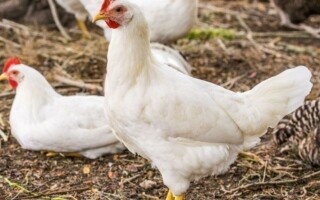
Most Americans are turning to backyard chickens to secure a steady supply of fresh eggs amid unprecedented price increases for this essential food product. The interest in chicken rental is linked to the ongoing egg shortage, which has reportedly been influenced by the widespread avian flu and increased production costs.
These chickens typically lay a dozen eggs a week, ensuring a stable supply for families looking to cut back on food expenses. This trend is taking shape alongside rising demand, according to incubator data across the country.
Notably, sales of chicken feed have declined since October, according to CBS News. For many renters, the experience of raising chickens has proven to be a profitable endeavor, leading them to ultimately decide to keep the birds in their homes on a permanent basis.
Although renting chickens does not resolve the national egg shortage, it offers a unique solution for families looking to secure fresh eggs and reduce reliance on supermarket prices. This trend reflects a broader shift towards self-sufficiency in the face of economic pressures.
According to the U.S. Department of Agriculture, since the spike in 2022 more than 163 million birds have been culled. The rental service provides an effective and sustainable alternative to buying eggs at stores.
According to Rent The Chicken, clients can rent a couple of chickens for approximately $600 for half a year and receive a coop, food, and care support for the birds. By early 2025, the U.S. had an estimated 304 million laying hens, which is 2% less than the previous year and 11% less than five years ago.
With a decrease in the number of layers, there have been significant price increases in grocery stores, reaching up to $10 a dozen in some areas. Companies like Rent The Chicken offer a six-month chicken and feed rental, allowing families to collect eggs at home.
Only in January 2025 were 19.5 million laying hens culled, making it the deadliest month since March 2022. This policy of mass euthanasia requires the destruction of the entire flock upon detection of contamination even in one bird of a poultry flock, leading to sharp declines in egg production.














